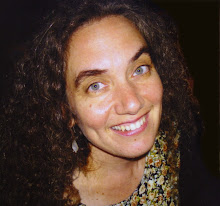Why Rosh Hashanah kicks off the Jewish New Year in the Autumn—not January
Celebrated with trumpet blasts, prayers, and festive meals, this holiday is a time for reflection and marks the start of the Jewish high holy days.
Published 21 Sept 2020, 10:54 BSTA man blows a shofar horn at the Western Wall Plaza in Jerusalem's Old City to celebrate the start of Rosh Hashanah in 2011. Many Jewish people interpret the horn's sound as a call to repent their sins and seek forgiveness from God.
Food, sound, prayer, reflection, celebration. Jewish people around the world will wish one another “Shanah tovah” (Hebrew for “good year”) during Rosh Hashanah, the observance of the Jewish New Year. Here’s what you need to know about the holiday, which took place this year between sundown on September 18 and sundown on September 20 and kicks off the Jewish high holy days.
Origins and meaning of Rosh Hashanah
Jewish people welcome the new year in September or October, not January, in observance of the lunisolar Hebrew calendar. Rosh Hashanah begins on the first day of Tishri, the first month of the calendar’s civil year and seventh month of its religious year. Given that the Hebrew calendar is more than a week shorter than the Gregorian calendar and, according to tradition, originated with the biblical creation of the universe, this holiday will mark the beginning of the year 5781 for Jews worldwide.
Hebrew for “head of the year,” Rosh Hashanah is a chance not just to celebrate and look ahead, but to consider the past and review one’s relationship with God. It also marks the first day of a period known as the Ten Days of Awe, or Days of Repentance, during which a person’s actions are thought to be able to influence both God’s judgment and God’s plan for that person. These high holy days culminate in Yom Kippur, a time of atonement that is considered the holiest day of the year.
Though the holiday has been celebrated for thousands of years, its origins are murky. Jewish scripture lays out the month and days of a similar festival but does not call it Rosh Hashanah. In the biblical passage Leviticus 23:24-25, God tells Moses that the people of Israel should observe the first day of the seventh month as a day of rest and mark it with the blast of horns.
At some point, the horn-blowing holiday became associated with the new year. The earliest reference to Rosh Hashanah in a rabbinic text comes from the Mishnah, a Jewish legal text that dates from A.D. 200.
How Rosh Hashanah is celebrated
In the leadup to Rosh Hashanah, the shofar—a trumpet made from a ram or kosher animal’s horn—is regularly sounded in synagogues. The holiday itself is celebrated with even more shofar blasts, usually a hundred during the services on both days. Many Jews interpret the sound as a call to repent of sins and seek forgiveness from God.
Work is prohibited on Rosh Hashanah, and many Jewish people spend the holiday attending special services at their synagogues and then celebrating with festive meals.
Rosh Hashanah has its own symbolic foods: round challah, apples, and honey. Symbolising God, the cycles of the year, and the sustenance that lies ahead, a rounded challah loaf, often studded with raisins, is usually dipped in honey and eaten in a celebratory meal. So are apples, which represent hope for a sweet year ahead. The tradition of eating apples for Rosh Hashanah is thought to have originated with Ashkenazi Jews in Europe who used the fall fruit in their new year’s meals. (See nine breads from around the world.)
So how will the beginning of the year 5781 be celebrated in a time like no other? In many places worldwide, synagogue attendance and family meals are still impossible due to the coronavirus. But some believers are getting creative. In Washington, D.C., for example, synagogues and Jewish organisations came up with a pandemic plan, writes Matt Blitz for DCist. At 5 p.m. on September 18, hundreds of people around the city blew their shofars outside in a simultaneous show of new year’s devotion.
Friday, September 16, 2022
Rosh Hashanah 2022 will begin in the evening of Sunday , September 25 and ends in the evening of Tuesday , September 27
Subscribe to:
Post Comments (Atom)




No comments:
Post a Comment